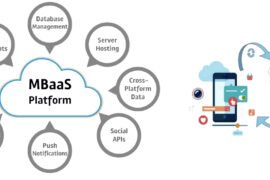The mobile app landscape is booming, offering businesses a powerful tool to connect and engage with their audience. But with so many options available, choosing the right option for mobile application development can feel overwhelming. This guide dives into the three main contenders: Native apps, Hybrid apps, and Progressive Web Apps (PWAs).
Native Apps: Champions of User Experience
Imagine the apps you use daily – those polished interfaces and seamless interactions. These are likely native apps, designed specifically for a single platform (iOS or Android) using the platform’s native programming language. This dedication translates to exceptional performance, intuitive user interfaces that adhere to platform guidelines, and smooth access to device features like GPS and camera.
Native apps also benefit from regular updates and robust offline functionality. However, building a native app requires separate codebases for iOS and Android, which can impact development and maintenance costs.
Hybrid Apps: Bridging the Gap
Hybrid apps offer a compromise between development efficiency and user experience. They leverage a single codebase built with web technologies like HTML, CSS, and JavaScript, which is then wrapped in a native container to function on both iOS and Android. This sometimes translates to faster development times and lower maintenance costs.
Popular frameworks like Cordova and Ionic simplify this process. However, the user experience might feel generic compared to native apps, and some functionality might be tricky to implement. While not perfect, hybrid apps are evolving to become more viable alternatives, especially for businesses with budget constraints.
Progressive Web Apps (PWAs): The Web Takes Center Stage
Think of PWAs as the new wave of web experiences. They’re essentially web apps designed to operate and feel like native apps. Users don’t need app stores – just a browser and a web address. This platform independence allows PWAs to run on various devices and operating systems. Additionally, PWAs boast shorter development timelines and lower costs due to the single codebase approach. Updates bypass app store approvals, and there are no store fees.
However, PWAs face limitations. Performance and responsiveness might be slower than native apps, and feature sets might be restricted. Furthermore, lower visibility due to the lack of an app store presence can hinder discoverability.
The Verdict: It Depends
The ideal mobile app development approach hinges on your specific needs and goals. Here’s a quick breakdown to help you decide:
- Native Apps: Opt for native if a top-notch user experience, reliability, and security are paramount. However, be prepared for a higher investment in time and resources.
- Hybrid Apps: Consider hybrid apps if you seek a balance between affordability and quality, and easy app download access is important.
- PWAs: PWAs are a good fit if you prioritize a mobile experience within budget constraints or aim to avoid app store fees.
Ultimately, the best approach depends on your unique project requirements. By carefully evaluating your needs and priorities, you can choose the mobile app development path that propels your business forward.


